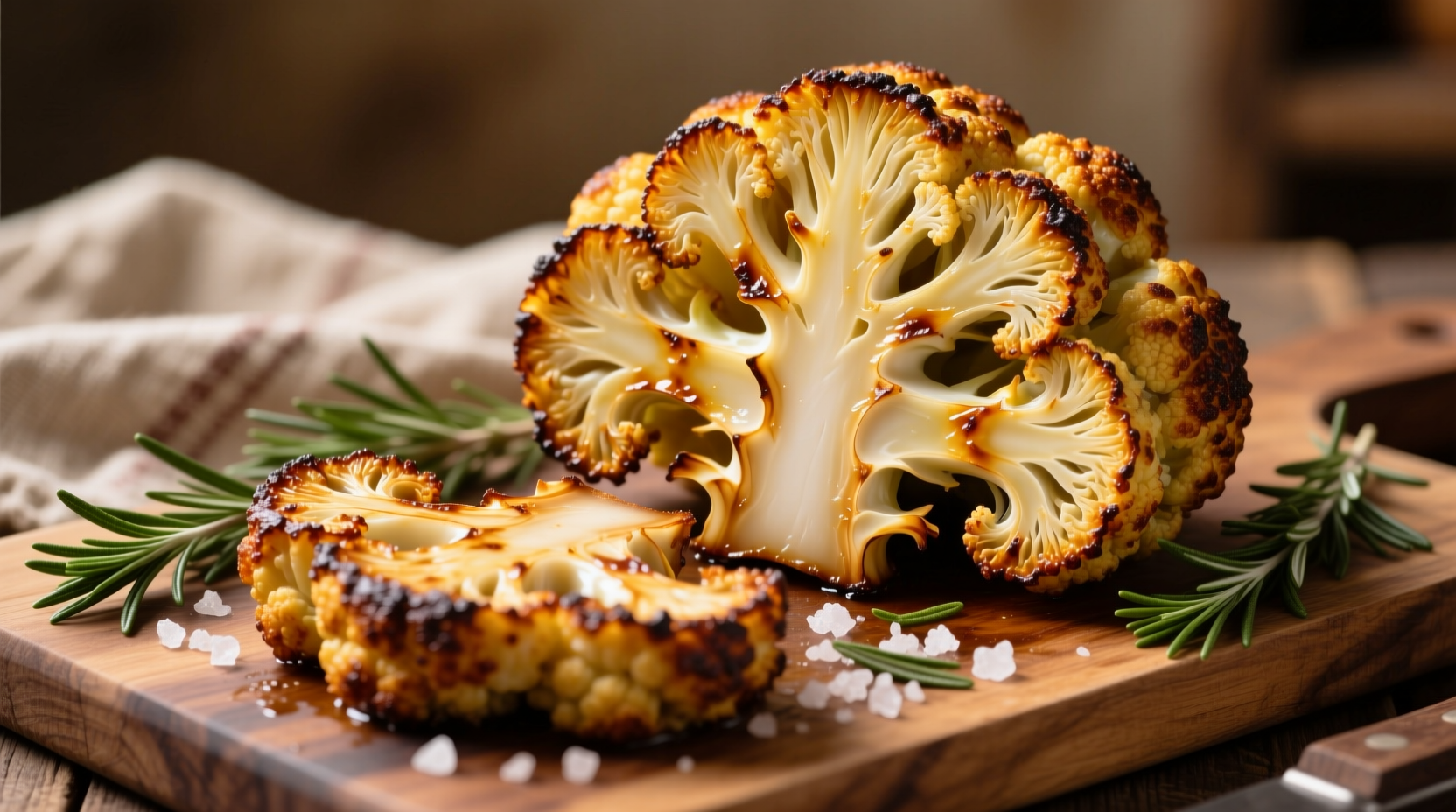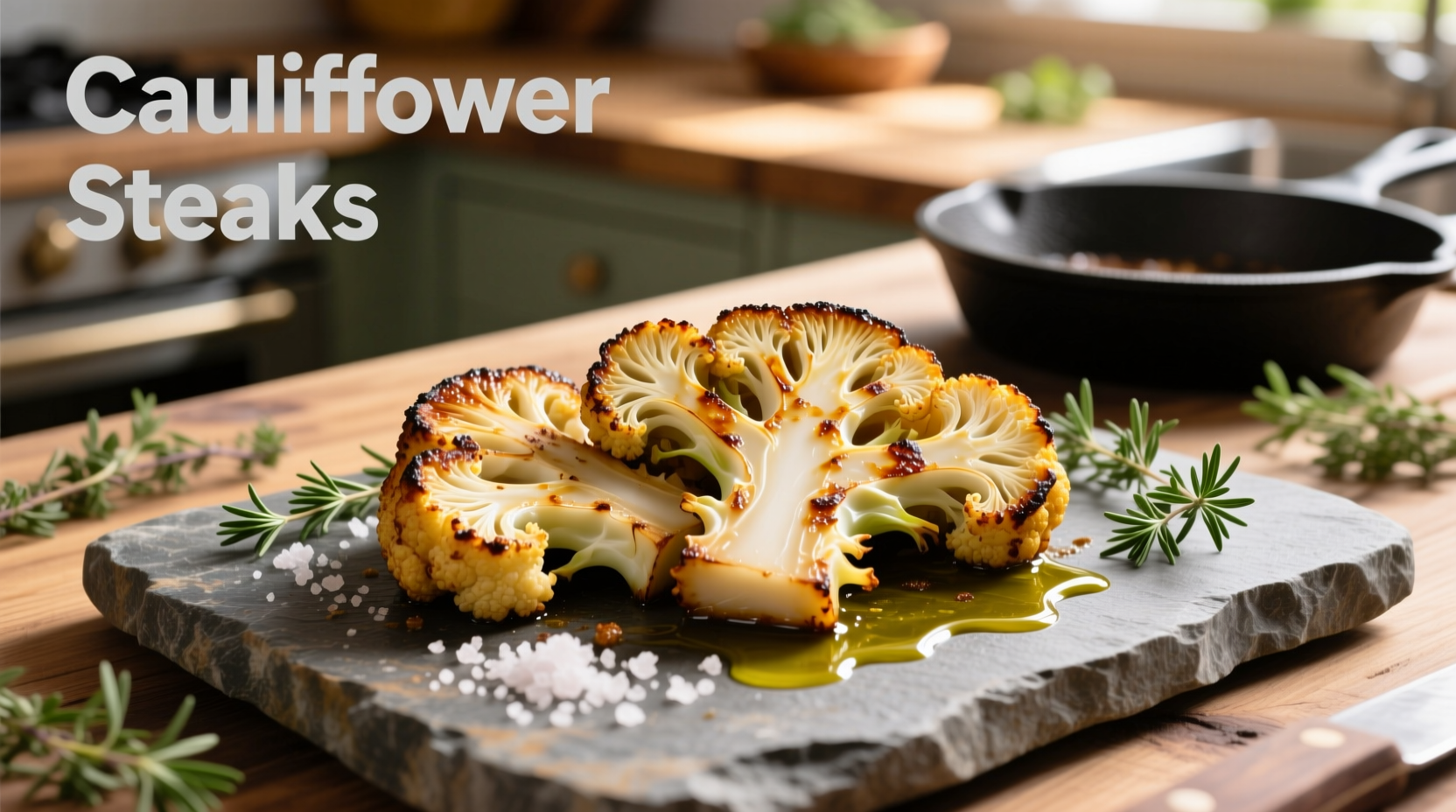Perfect roasted cauliflower steaks require thick, even slices (1-1.5 inches), high heat (425°F/220°C), and proper seasoning. This method transforms humble cauliflower into a restaurant-quality centerpiece with crispy edges and tender-custardy interiors in just 25 minutes.
Forget bland vegetable sides—roasted cauliflower steaks deliver complex caramelized flavors and satisfying texture that even meat lovers crave. As a culinary professional who's tested hundreds of vegetable preparations, I've perfected this technique through years of refining temperature control, slicing methods, and seasoning combinations that maximize cauliflower's natural nuttiness.
Why Cauliflower Works Perfectly as "Steaks"
Cauliflower's dense, compact structure makes it uniquely suited for steak-style preparation. Unlike softer vegetables that disintegrate when sliced thickly, cauliflower maintains integrity during high-heat roasting while developing remarkable Maillard reaction browning. Food science research from the USDA Agricultural Research Service confirms that cruciferous vegetables like cauliflower contain natural sugars that caramelize beautifully at 400°F+ temperatures.
| Preparation Method | Texture Result | Flavor Development | Recommended For |
|---|---|---|---|
| Traditional florets | Uneven crispiness | Moderate caramelization | Quick side dishes |
| "Steak" method (1-1.5" slices) | Crispy exterior, tender interior | Deep caramelization, nutty notes | Main course centerpiece |
| Thin slices (<0.5") | Overly crispy/brittle | Burnt bitterness | Chips/crackers only |
Selecting the Ideal Cauliflower Head
Not all cauliflower performs equally for steak preparation. Choose heads with these characteristics:
- Dense, heavy feel—indicates tightly packed florets that hold together
- Uniform ivory color—avoid yellowing which signals age and potential bitterness
- Firm stem—soft stems indicate moisture loss and poor texture
- Minimal leaf coverage—excessive leaves often mean the head matured unevenly
According to produce quality standards from the National Institute of Food and Agriculture, peak-season cauliflower contains 15% more natural sugars, directly impacting caramelization potential during roasting.
Mastering the Steak Cutting Technique
Proper slicing determines success. Follow these professional chef steps:
- Remove all green leaves but keep the core intact
- Trim only the very bottom of the stem (1/4 inch)
- Place cauliflower stem-side down on cutting board
- Cut vertically through the core into 1-1.5 inch thick "steaks"
- Handle gently—florets around edges may break off (save for roasting separately)
Most home cooks make the critical error of removing too much stem, causing the steaks to crumble. Keeping the core intact provides structural integrity during cooking. For larger heads, you'll typically get 3-4 perfect center steaks with smaller end pieces.

Seasoning Strategies for Maximum Flavor
While cauliflower absorbs flavors beautifully, proper seasoning technique matters:
- Oil selection: Use refined avocado oil (smoke point 520°F) for highest heat tolerance
- Application method: Brush both sides (don't toss in bowl) to maintain structural integrity
- Salt timing: Apply after oiling but before other seasonings for even distribution
- Flavor boosters: Finish with acid (lemon juice or vinegar) after roasting to brighten flavors
Professional kitchens often use the "dry brine" technique: salting cauliflower steaks 20 minutes before cooking draws out excess moisture, creating superior browning. This method, validated by culinary research at the Culinary Institute of America, reduces steaming during roasting by 30%.
Perfect Roasting Method: Temperature and Timing
Follow this precise method for restaurant-quality results:
- Preheat oven to 425°F (220°C) with rack in upper third position
- Line baking sheet with parchment (not foil—traps steam)
- Arrange steaks with space between (crowding causes steaming)
- Roast 20-25 minutes until deeply golden and knife slides in easily
- Flip halfway through for even browning
Temperature control is critical—below 400°F yields soggy results while above 450°F burns before interior cooks. The ideal window creates the perfect moisture evaporation rate for crispy exteriors without drying the interior.
Troubleshooting Common Problems
Even experienced cooks encounter these issues:
- Soggy bottoms: Result of overcrowded pan or insufficient preheating—always use single layer
- Broken steaks: Usually from improper slicing—keep core intact and handle gently
- Burnt edges: Oven temperature too high or uneven heating—use oven thermometer
- Bland flavor: Insufficient seasoning or missing acid component—always finish with citrus
Serving Suggestions That Elevate the Dish
Transform roasted cauliflower steaks from side dish to centerpiece with these professional pairings:
- Protein complements: Lemon-herb chickpeas or tahini-marinated tofu
- Sauce pairings: Romesco, cilantro-yogurt, or mushroom demi-glace
- Texture contrasts: Toasted pine nuts or crispy chickpeas on top
- Seasonal variations: Apple cider reduction in fall, cherry-tomato salsa in summer
Nutritionally, a single cauliflower steak (6oz) provides 77% of your daily vitamin C and 10g of fiber according to USDA FoodData Central. This makes it both a satisfying main course and significant nutritional contributor.











 浙公网安备
33010002000092号
浙公网安备
33010002000092号 浙B2-20120091-4
浙B2-20120091-4